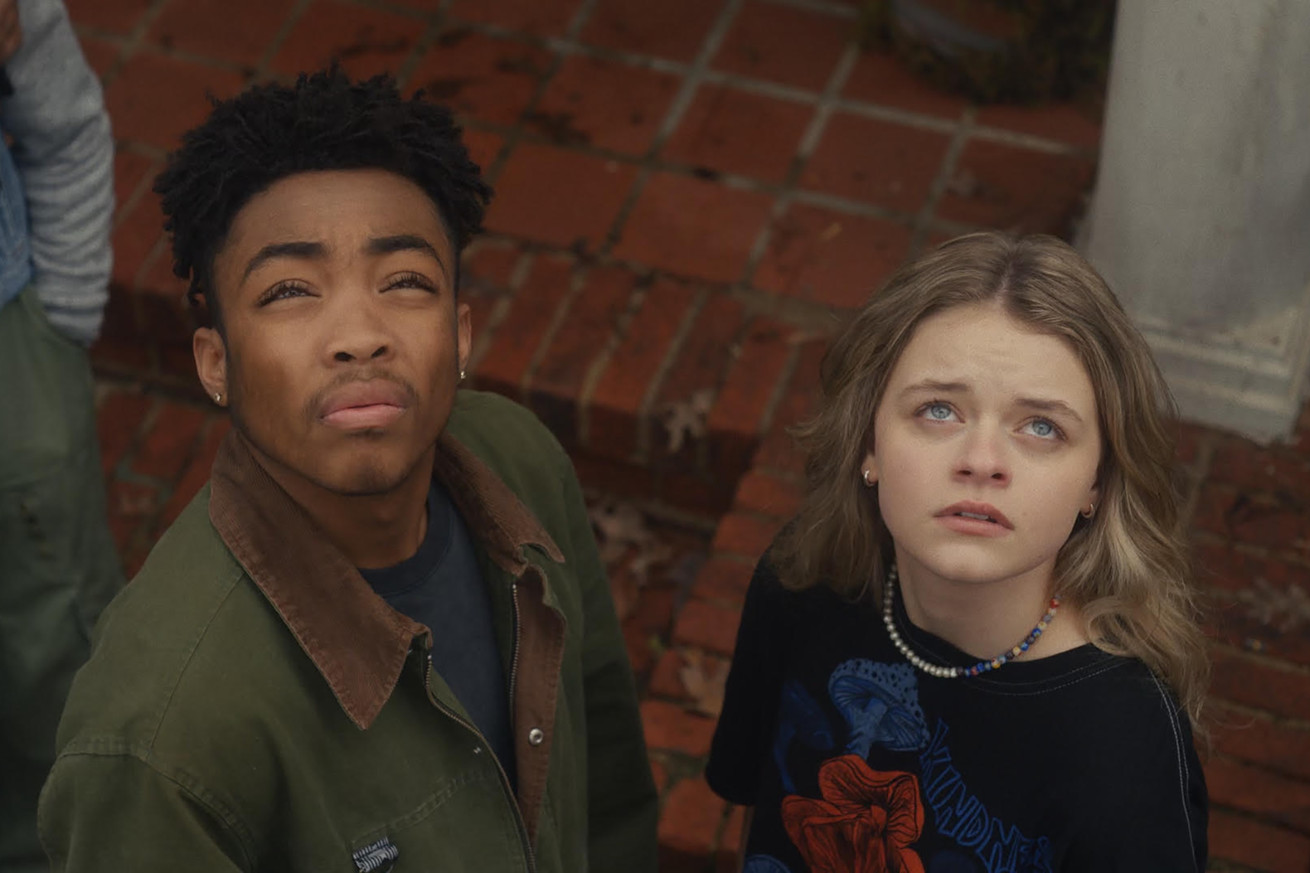
Landscape With Invisible Hand imagines an alien invasion as a financial disaster
In Landscape With Invisible Hand, the alien invasion doesn’t incite violence or an all-out galactic war: it screws up the economy. The sci-fi flick from director Cory Finley, based on a novel by M. T. Anderson, premiered at this year’s Sundance Film Festival. It takes place in a future where an alien race has descended on Earth, bestowing advanced technology and the riches that come with it — but only for the human elite. What follows is a somewhat messy fable about capitalism and art, one that looks at the aftermath of an invasion rather than the event itself.
The movie takes place in the 2030s, around five years after the arrival of the Vuuv, an advanced species that aren’t physically intimidating — they look like uncooked turkeys and communicate by scraping their flippers together — but nonetheless have managed to completely shift the power balance on Earth. They do this through their advanced technology that only the very elite can afford access to (and which, frustratingly, we actually see very little of in the film). But by the time Landscape With Invisible Hand is set, they’re firmly entrenched. Rich humans live in hovering cities in the sky alongside the Vuuv, while everyone down on the surface is just trying to survive.
The story centers on Adam (Asante Blackk), a high school student and budding artist; his work is even used as a clever storytelling tool, with brief montages of paintings that show the steady downfall of humanity in oils and acrylics. Early on, he meets a new kid named Chloe (Kylie Rogers), whose family is one of many struggling to get by. They don’t have a place to stay, so Adam decides to fast-forward his crush on Chloe by inviting her family to live in his basement. (Miraculously, his mother, played by Tiffany Haddish, is only mildly perturbed at this.)
As both families struggle with money, Chloe comes up with an idea. She starts livestreaming her dates with Adam — something called a “courtship broadcast” — and the Vuuv, who produce asexually and have no concept of romantic love, can’t get enough. The tip money becomes a main source of income but also stress; having to be on all of the time, and make his love life so public, turns into a degrading experience for Adam.
Early on, Landscape With Invisible Hand does a fantastic job of (no pun intended) painting a picture of this alien-fuelled depression. The worldbuilding is subtle and believable; the kids scrounge around for garbage thrown from the elite ships to sell, and the adults take literally any job they can. You see lawyers working at food trucks, preeminent surgeons chauffeuring the Vuuv around, and later, things get much weirder and more disturbing. It’s basically a heightened version of the wealth inequality that already exists, except the really rich don’t even live on the surface anymore.
But as the story progresses, it gets a little muddled. Chloe’s scheme gets the families sued by a very skilled Vuuv lawyer, and the compromise they reach is like something out of a sitcom. There are some funny moments, but the Vuuv work much better as a mostly invisible force; like a horror movie monster, they become less interesting or intimidating the more time you actually see them on screen. This is especially true because this is a decidedly low-budget flick. The aliens look like background characters from Men in Black, and the rest of the CG elements aren’t any better. Thankfully it’s used relatively sparsely.
Messy as the movie can get in its back half, it’s saved by some great performances — Blackk feels like a star in the making, and Haddish is as charming as ever — and a heartwarming finale that makes the best of terrible situation. It may be set in the future, but given the current state of the world, it’s an alien film that can feel all too human.
This review is based on a screening at the 2023 Sundance Film Festival. Landscape With Invisible Hand is due out sometime this year.

